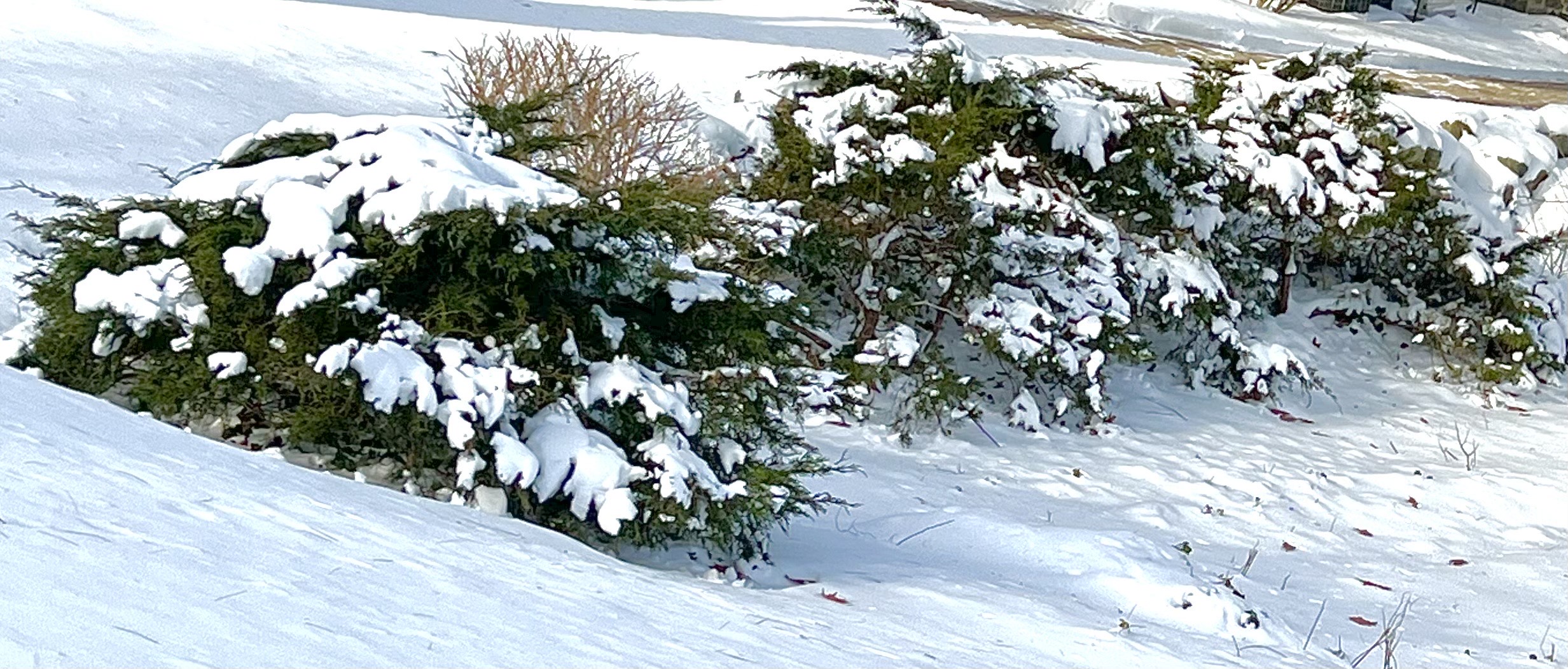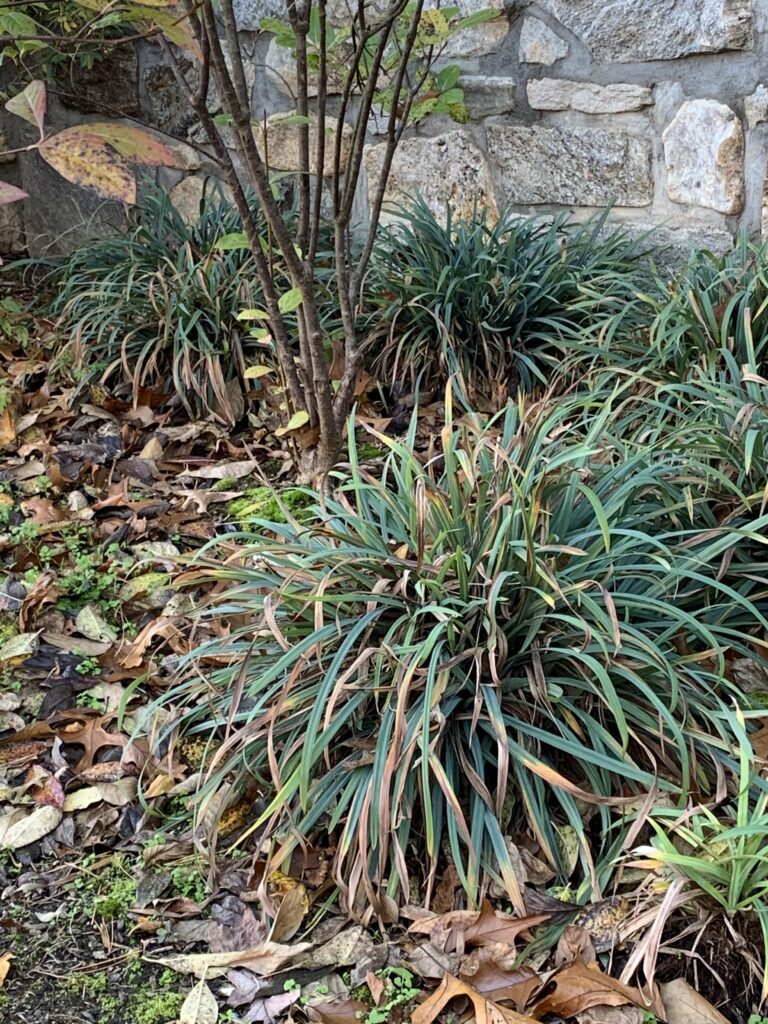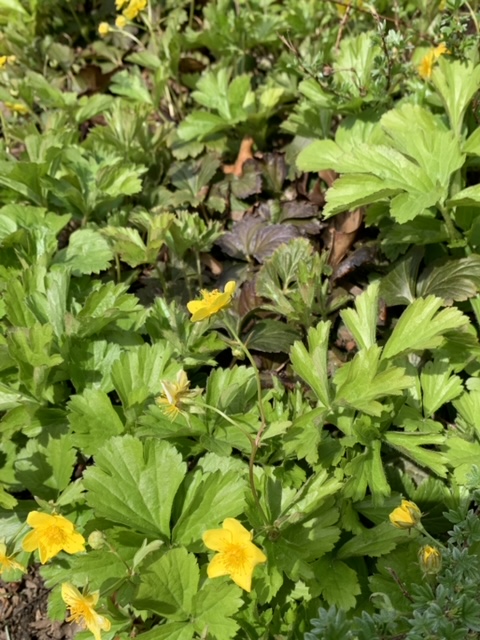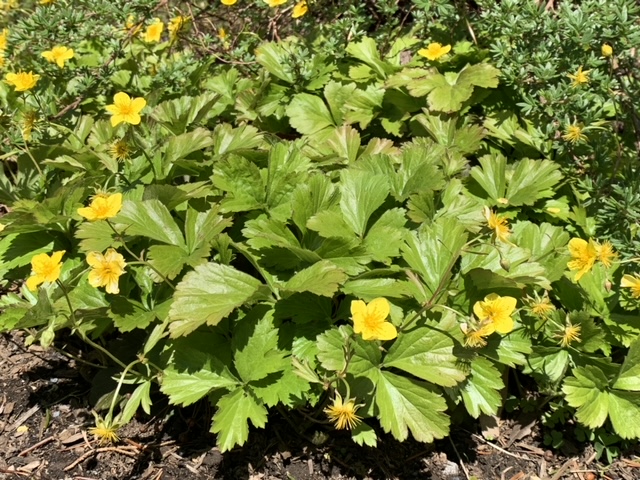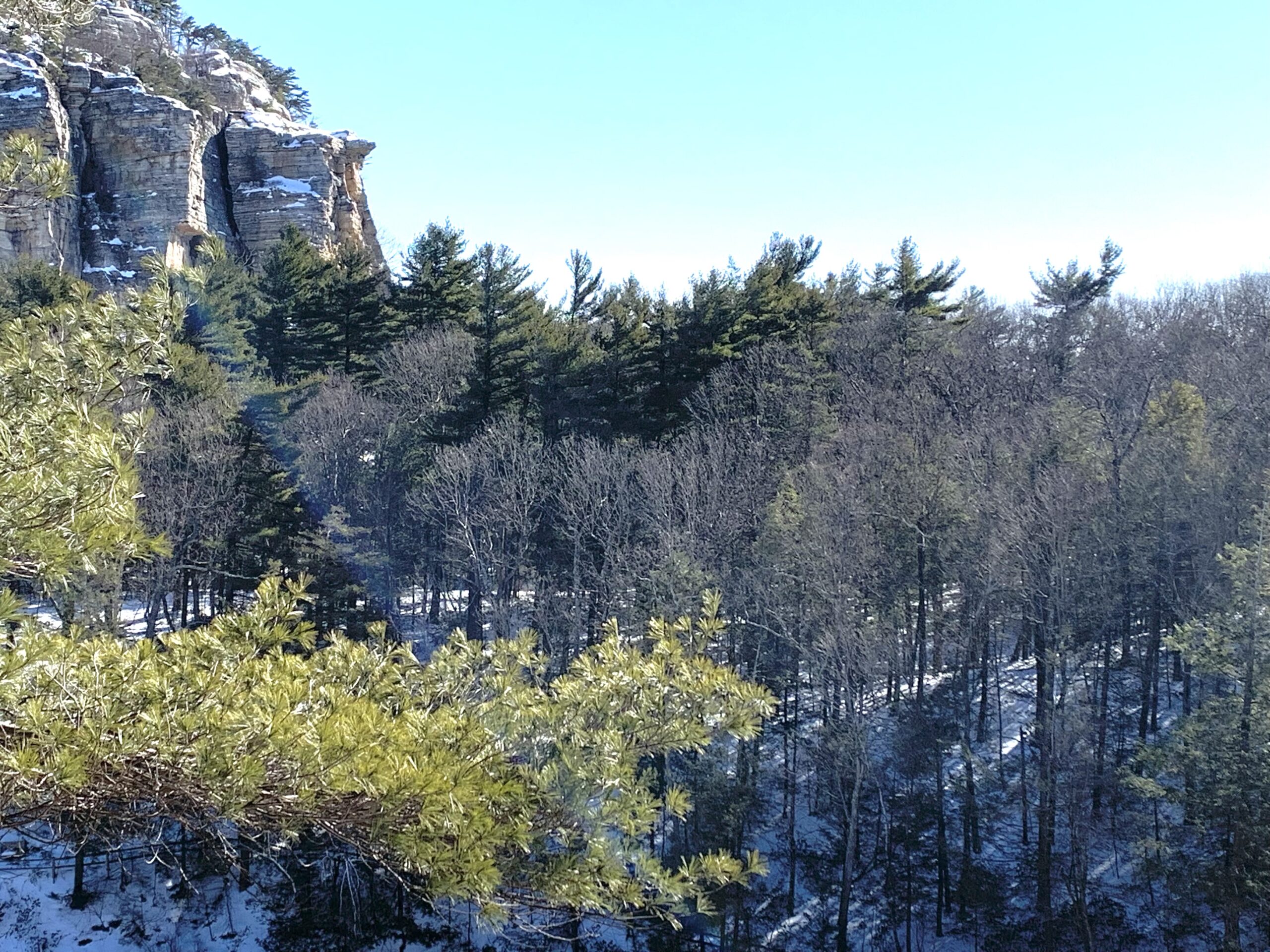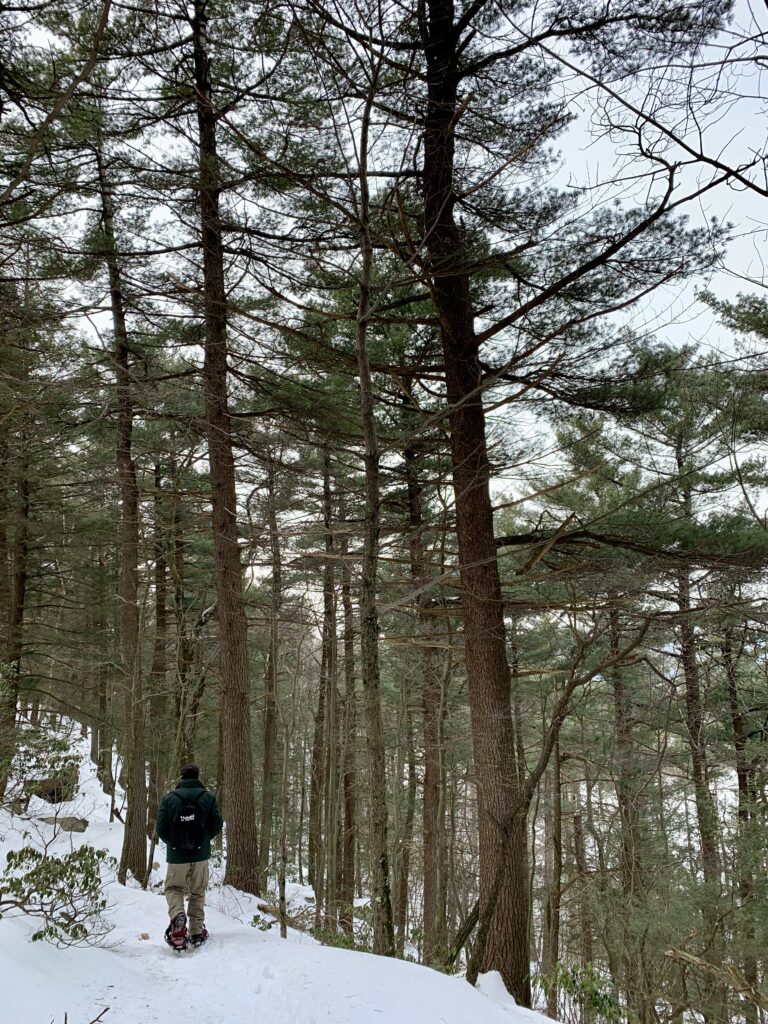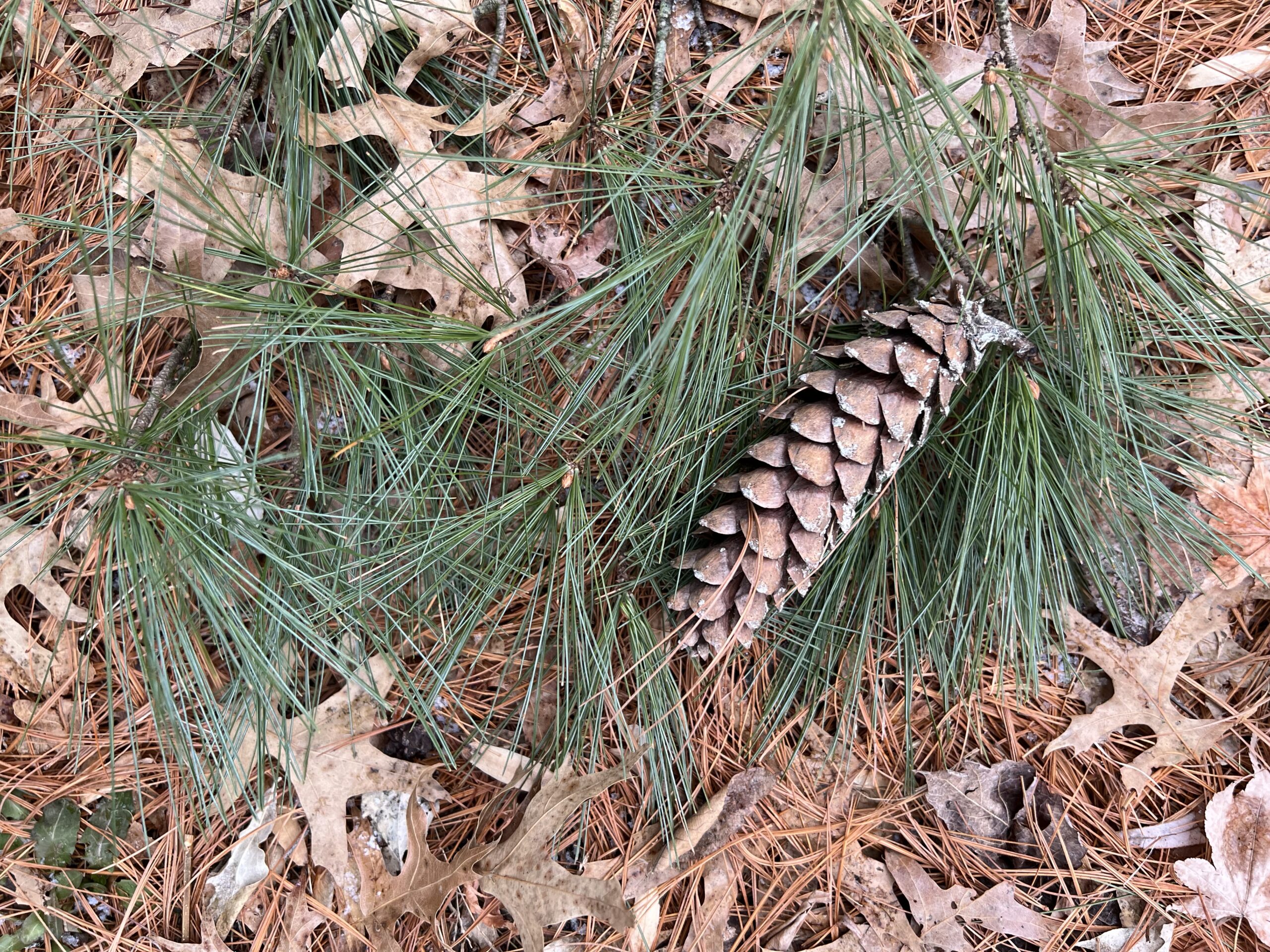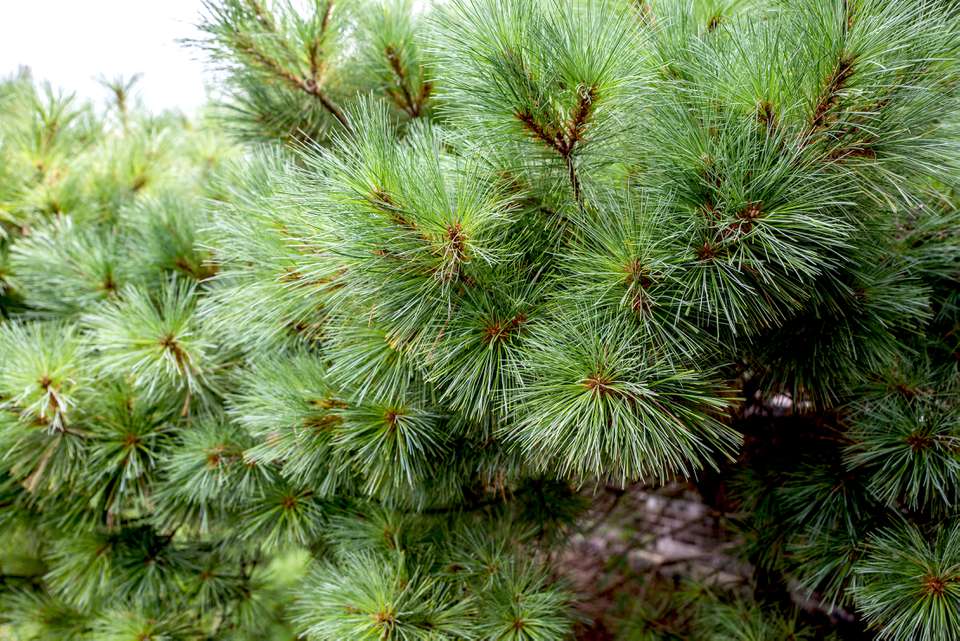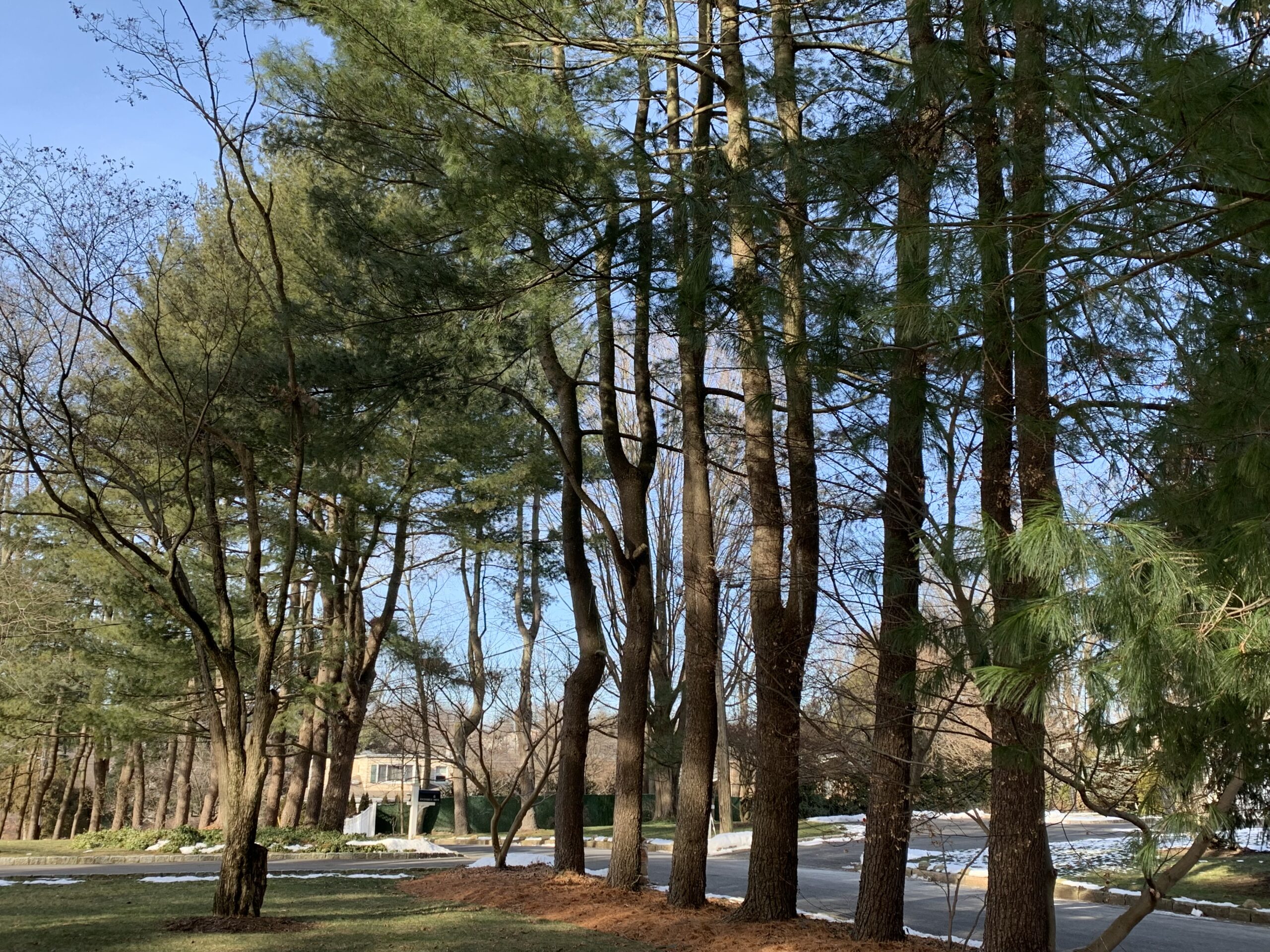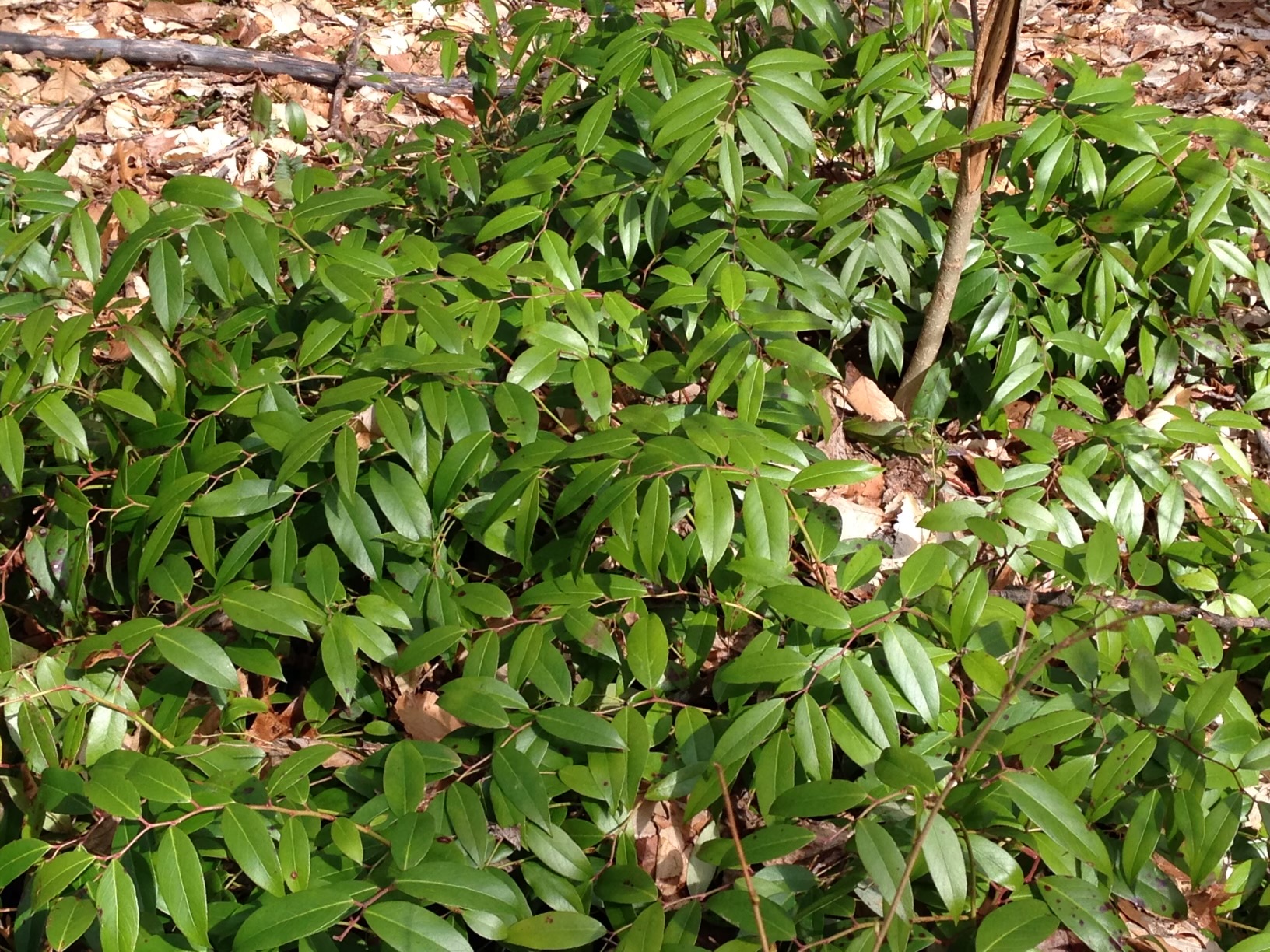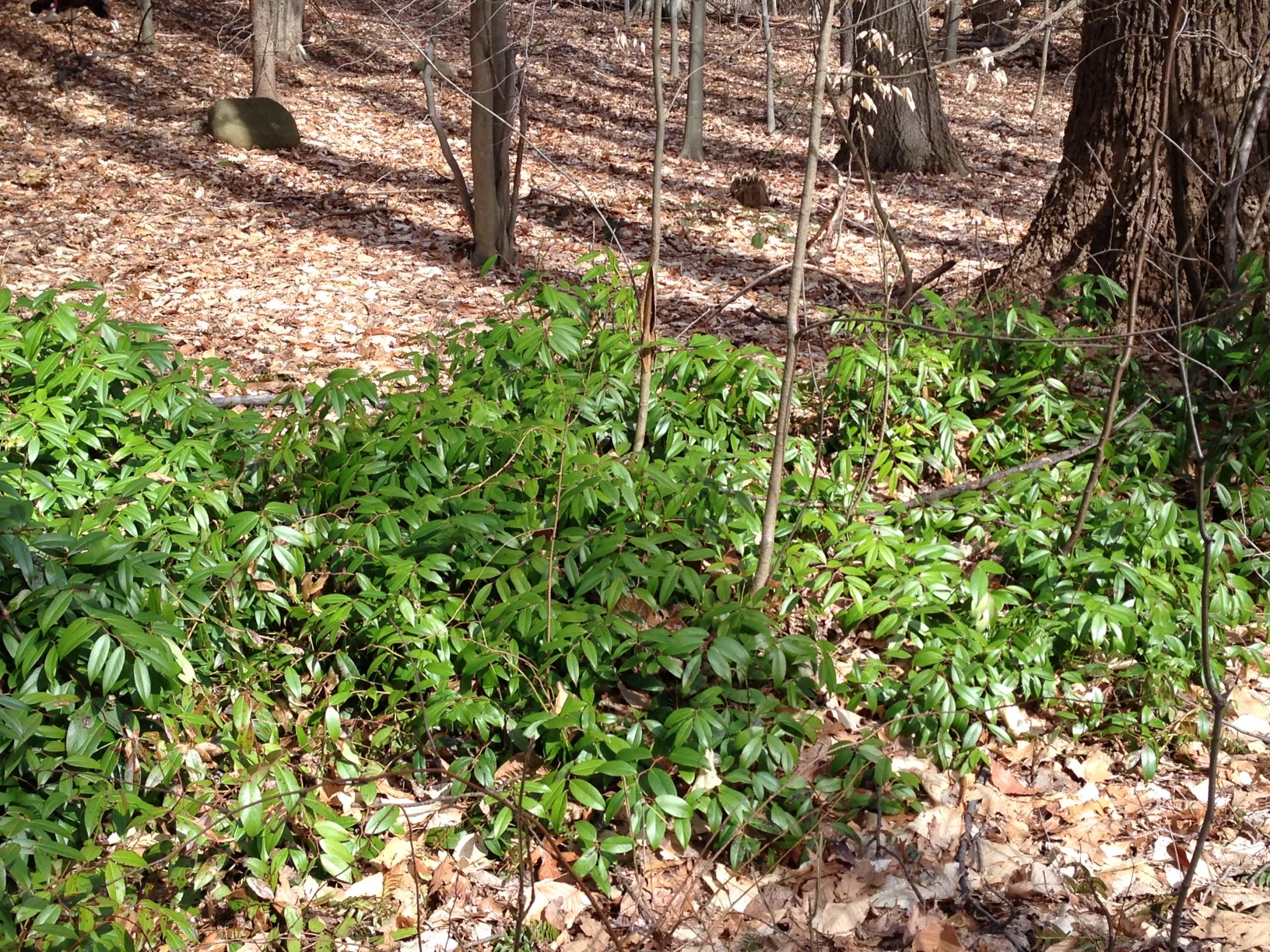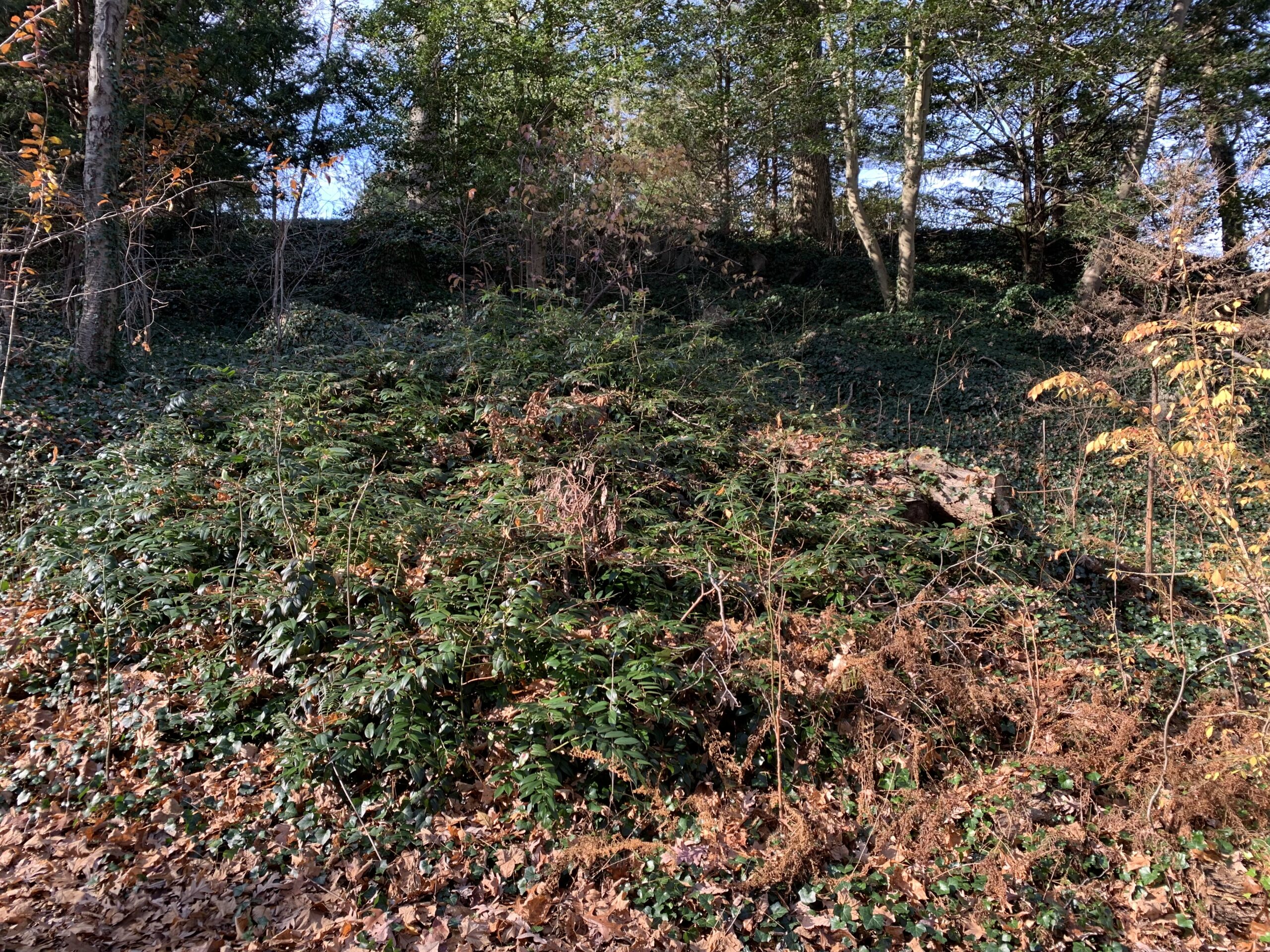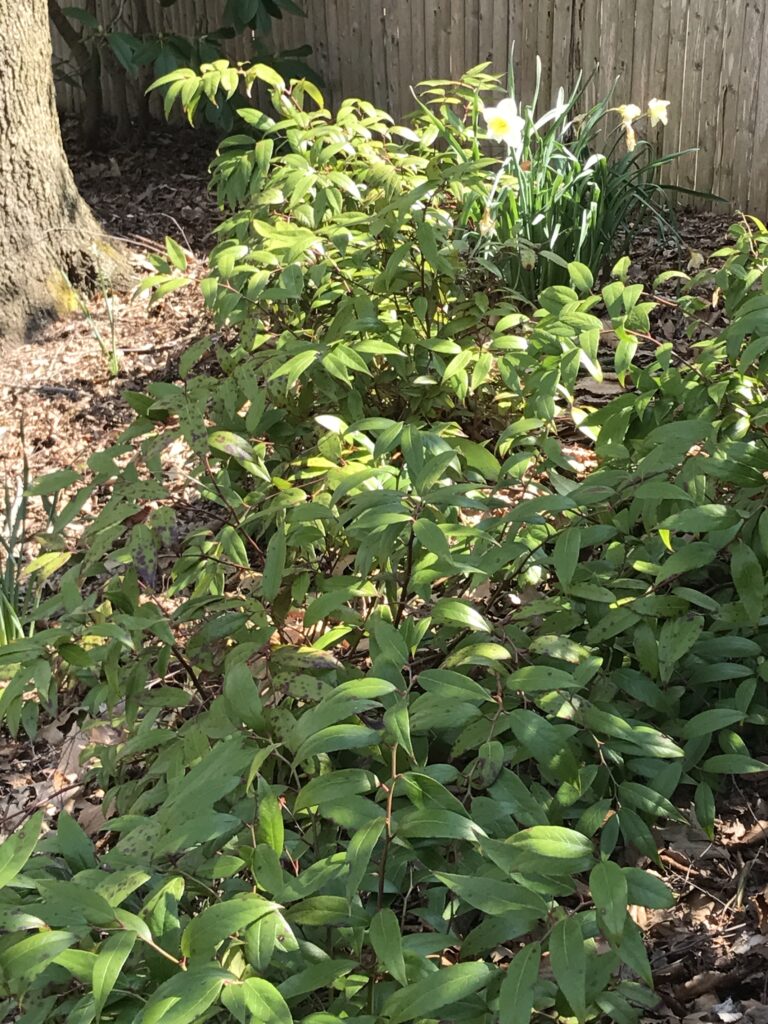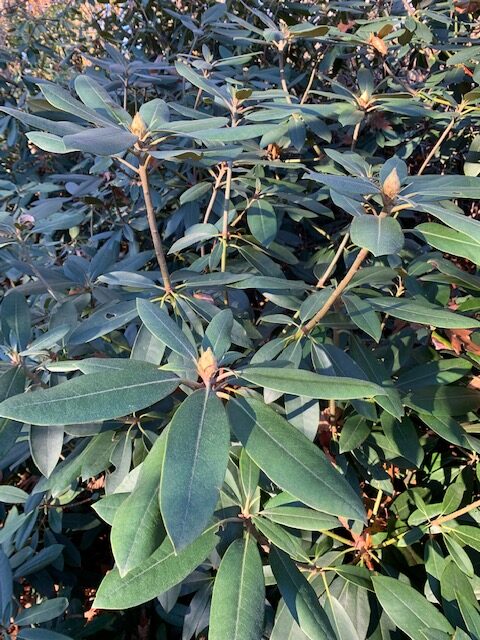We have a big problem at the Nature Center. And we are not alone.
Ivy (Hedera spp.) – English Ivy, Irish Ivy, Persian Ivy – causes enormous damage to trees, buildings, and forest ecology throughout the United States. Maybe you’ve already seen Ivy pull stucco, mortar, trellises, and rain gutters off of buildings, or cause wooden siding to rot or attract mold. At least those things can be repaired.
The damage Ivy causes in nature is much worse. It climbs trees, slowly strangling them to death by stealing light and water, and it weighs down their weakened branches until they break and fall during storms. It crawls across the ground, sending out roots to take up all available nutrition. And it smothers the ground with its evergreen leaves so other plants cannot establish or find enough light to survive.
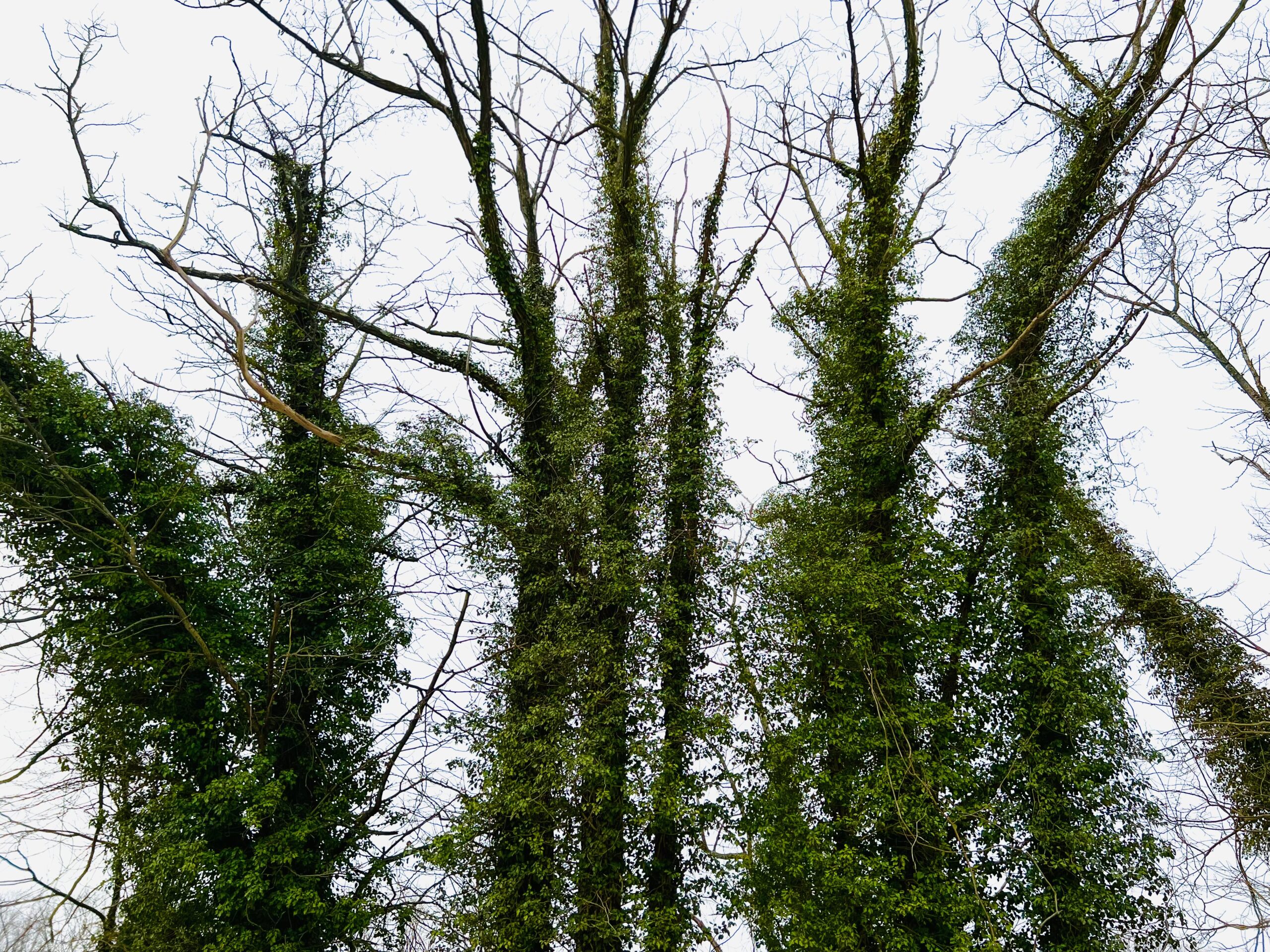
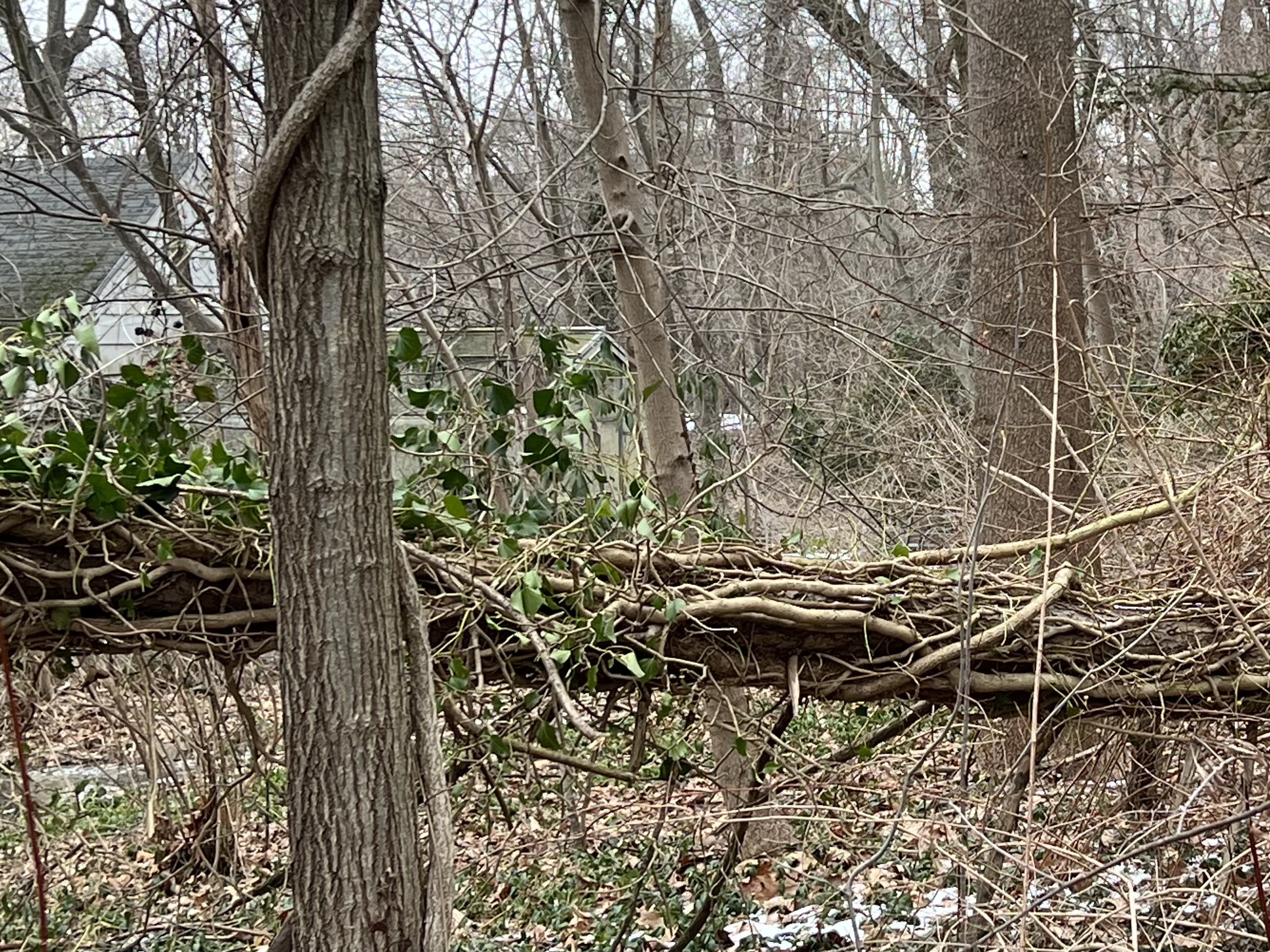
Forests in our region were once populated with hundreds of different species of shade-loving plants: ferns, grasses, and a huge variety of wildflowers. Those plants fed thousands of species of insects, birds, and animals. Of course, development and too many deer have contributed to a tragic loss of these species, and so has the introduction of invasive plants. Ivy is one of the worst offenders.
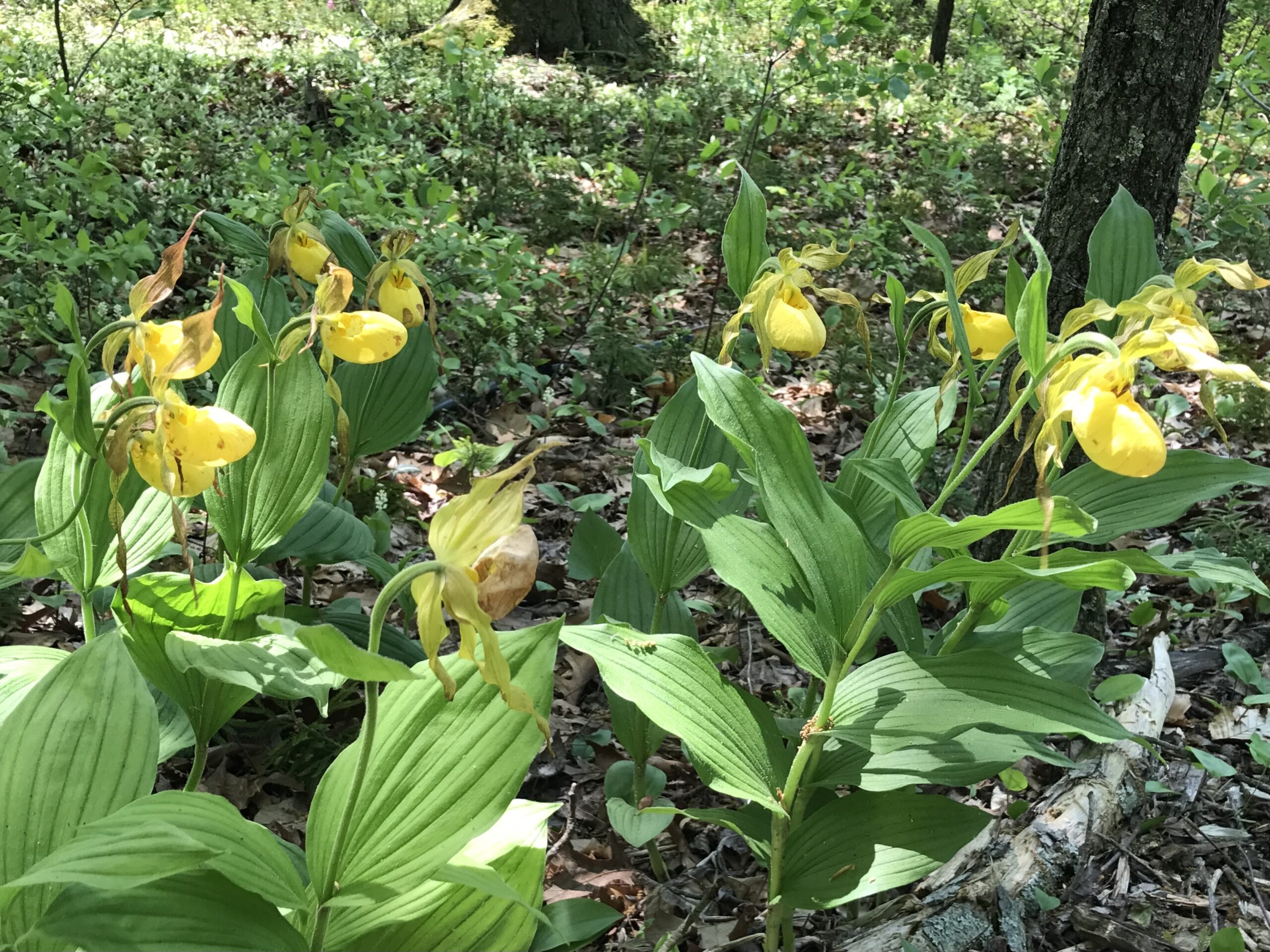

There is nothing wrong with English Ivy — in England! It doesn’t overrun woodlands in Europe because it evolved there, and European insects and animals eat Ivy and control its growth.
In America, there are no natural controls, no insects or other animals to keep it in check, so Ivy becomes invasive. It out-competes native plants, leaving the forest depleted and sterile. Nothing here eats Ivy, so when Ivy is all that is left in the forest, there is nothing for forest animals to eat.
Some birds eat berries produced by Ivy and scatter the seeds, which can spread Ivy from garden to forest. But humans are much more culpable. Ivy is unfortunately popular with humans because it is evergreen, grows very fast, will live in sun or shade, and can cover a lot of ground or a wall very quickly. But it is also very difficult to control once it is established. Cutting vines at the base, applying herbicide to cut stems, and digging out roots can help save trees, but diligence is required to prevent this very aggressive pest from trying again.
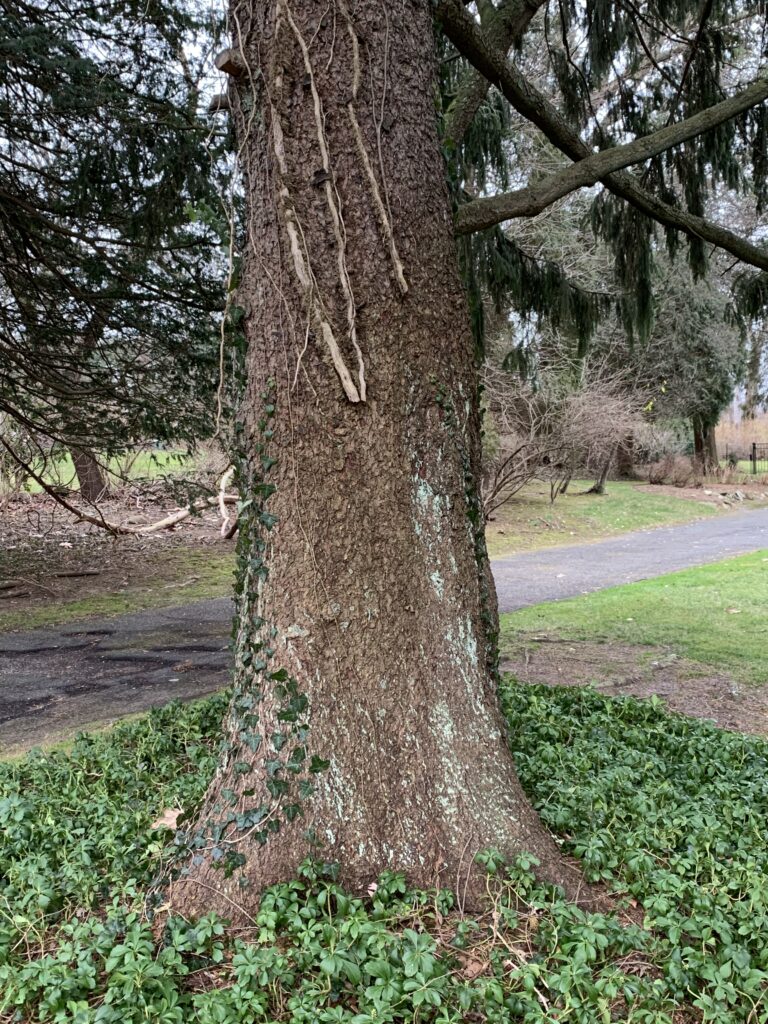
There is no true Ivy native to North America. But there is a beautiful native plant that makes a great substitute for Ivy. If you want a climbing vine to cover a wall or an arbor, or you’re looking for a groundcover for a shady area, try Virginia Creeper (Parthenocissus quinquefolia). It is fast growing, and it has glorious fall color. Its leaves are the host plant for the very interesting Sphinx moth – the native insect that acts as a natural control preventing this vine from taking over the forest. Virginia Creeper will wind its way up a tree trunk, but it won’t kill your trees.
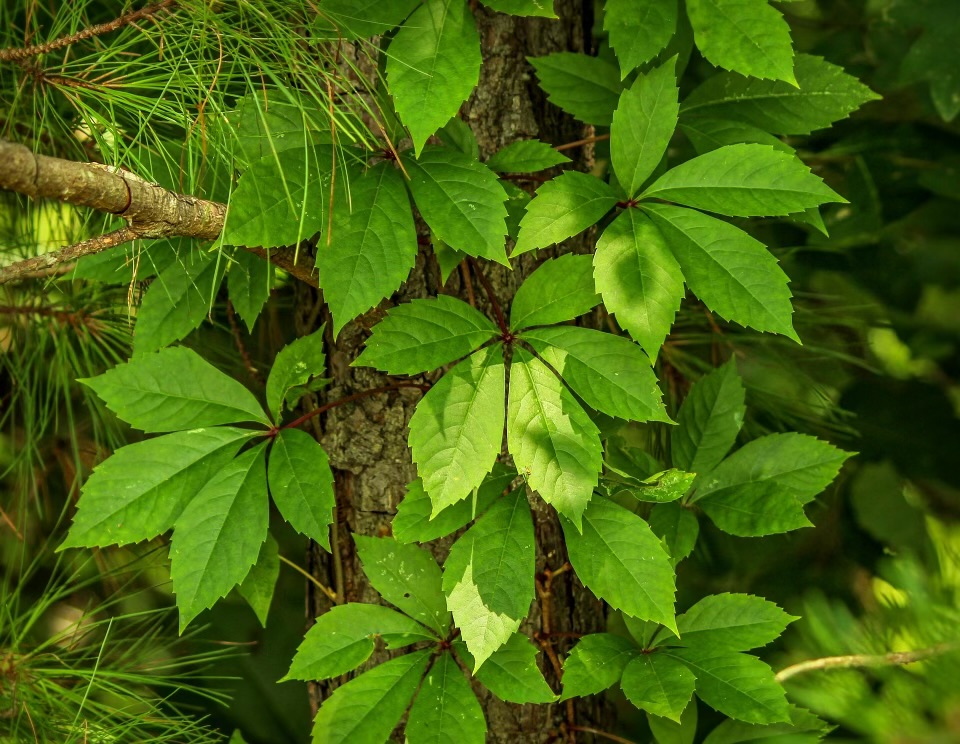
Don’t be confused by the common names of Boston Ivy (Parthenocissus tricuspidata) and Poison Ivy (Toxicodendron radicans). Boston ivy is not from Boston and it’s not an Ivy. It is an Asian vine in the same family as Virginia Creeper. Though it is not as destructive as Ivy, it actually can grow faster and taller than Ivy and completely cover a building in no time. Poison Ivy is not an Ivy either. It is a native vine and, interestingly, it is only “poison” to allergic humans and not at all to other animals. It actually has a lot of wildlife value to birds and other animals. If it’s not in your immediate area, you could consider admiring its beautiful fall color from afar!
In the coming years, the Nature Center has a fight on its hands. We want to remove Ivy from our 33 acres of woods. While some areas are only partially affected, and we work hard to keep Ivy off of our trees, there are large sections of our forest totally overrun with Ivy. We will be formulating plans for an Ivy-removal program this year, but it will be difficult and expensive. If you would like to help by making a contribution, please visit our Donate page here.


